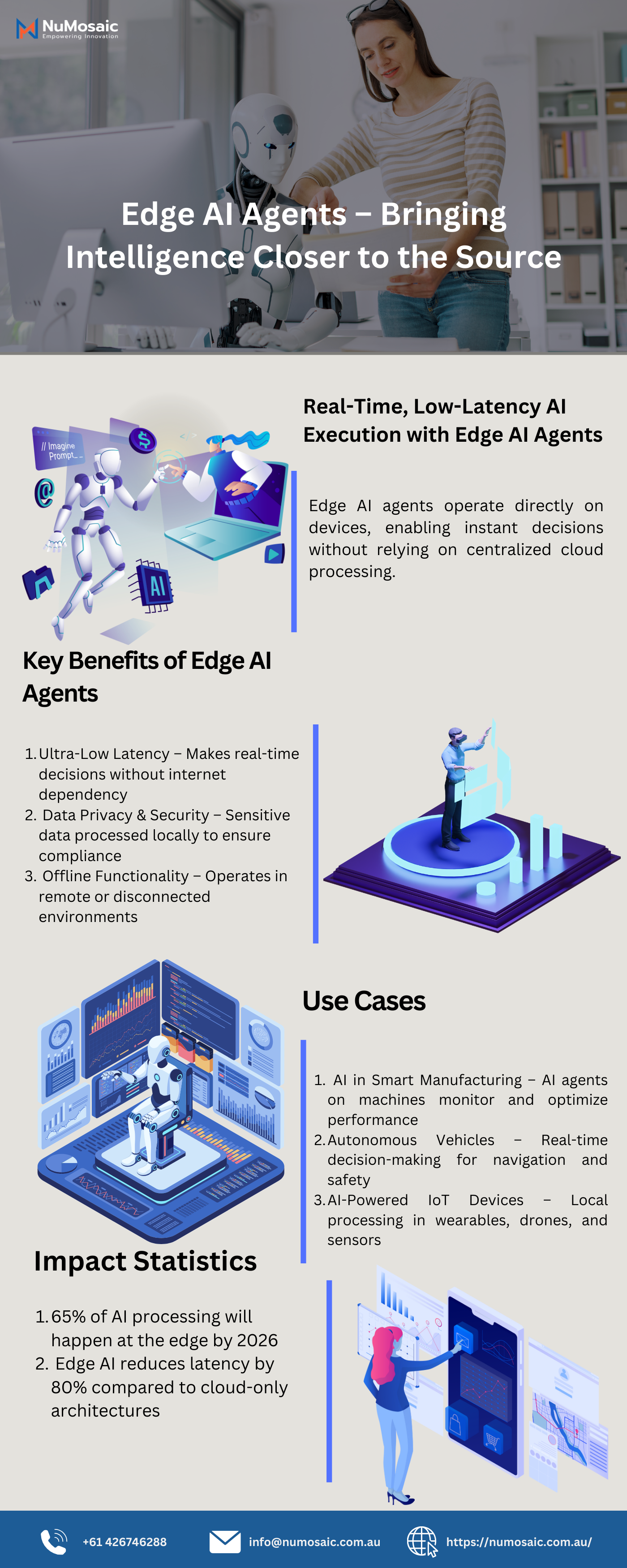In today’s hyperconnected world, the demand for faster, smarter, and more autonomous systems is pushing the boundaries of traditional cloud-based AI. Enter the Edge AI Agent — a groundbreaking innovation that brings artificial intelligence directly to where data is generated. This approach reduces latency, enhances privacy, and enables real-time decision-making like never before.
What is Edge AI?
It refers to the deployment of artificial intelligence algorithms locally on hardware devices — or “at the edge” — instead of relying on centralised cloud servers. This allows devices such as smartphones, IoT sensors, drones, and autonomous vehicles to analyse and act on data instantly.
Unlike conventional cloud-based models, where data must be transmitted, processed remotely, and then returned, Its operates on-site, enabling ultra-fast responses and offline capabilities.
What is an Edge AI Agent?
It is a software or hardware-based system that integrates AI models with edge computing capabilities. These agents are designed to make intelligent decisions independently, continuously learning and adapting based on the local data they process.
Whether it’s a voice assistant recognizing your commands faster or a security camera detecting unusual behavior in real time, Edge AI Agents are making smart technologies more responsive and secure.
Why Bring Intelligence to the Edge?
The benefits
Reduced Latency: Decisions happen in milliseconds — critical for applications like autonomous driving or industrial automation.
Enhanced Privacy: Sensitive data stays local, minimising exposure to cloud-based vulnerabilities.
Bandwidth Optimisation: Only processed, relevant data is sent to the cloud, easing network congestion.
Resilience: Devices can function offline or in low-connectivity environments, boosting reliability.
Real-World Applications
Edge AI Agents are transforming industries across the board:
Smart Cities: Managing traffic flow, monitoring air quality, and enhancing public safety.
Healthcare: Powering wearable devices for real-time health tracking and emergency alerts.
Retail: Personalising customer experiences and optimising inventory in real-time.
Manufacturing: Detecting defects on assembly lines and predicting equipment failures before they occur.
The Future
As computing power becomes more affordable and AI models grow more efficient, the rise of Edge AI Agents will accelerate. They are expected to play a pivotal role in the growth of autonomous systems, decentralized networks, and next-generation IoT infrastructures.
From powering intelligent homes to securing critical infrastructure, It is not just a trend — it’s the next evolution in AI-driven innovation.
Conclusion
Edge AI Agents represent a significant leap in how we build and deploy intelligent systems. By bringing AI closer to the source, they offer faster, safer, and more efficient solutions for an increasingly connected world. As businesses and developers explore the power of edge computing, integrating Edge AI will be key to staying ahead in the age of real-time intelligence.

